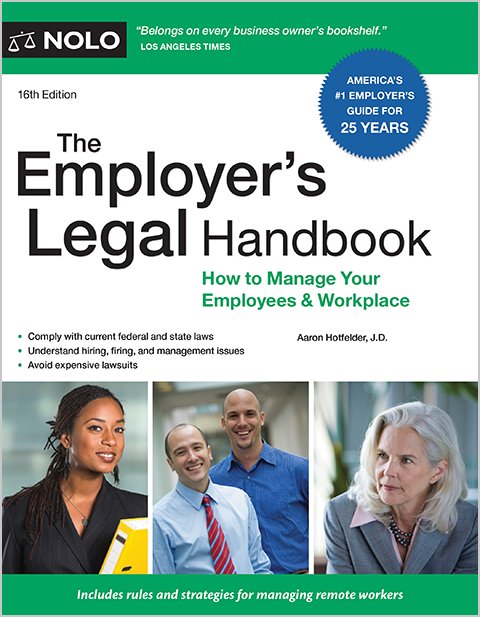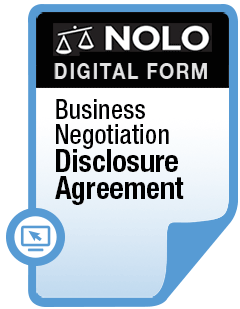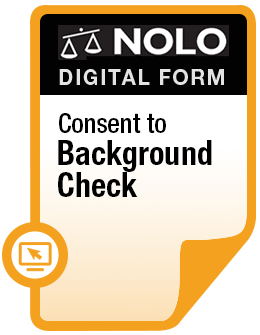Being prepared for an employee termination can help employers avoid legal trouble.
If you're a manager or human resources professional, one of your least pleasant tasks may be handling employee terminations. It's difficult to fire someone, and nothing can change that fact of work life. But, by being prepared and following the steps in this termination checklist, you can protect your company and make the task more manageable.
Before the Termination Meeting
Before you notify an employee of a termination, you should take certain steps to make sure the meeting goes smoothly. For example, you'll want to contact payroll, terminate access to important information, and create a plan for transitioning the employee's work to others. Getting these things in order will not only make the process smoother, but it will also help you avoid common errors that could lead to legal problems.
Prepare the Final Payment
California law requires employers to pay a terminated employee all sums owed immediately upon termination. The terminated employee's final paycheck must also include accrued vacation time, if your company offers paid vacation. You should prepare the check in advance, so that you can provide it to the employee at the termination meeting. Employers who fail to pay final paychecks on time can be hit with "waiting time" penalties, which are the employee's usual wages for each day that the check is late.
You will also need to reimburse the employee for any outstanding business expenses, according to your company's policy. You should have the reimbursement check ready to deliver at the termination meeting.
Close Company Accounts
If the terminated employee has company credit cards, phone cards, or the like, these should be canceled on the day of the termination meeting. And, you should be prepared to deactivate the terminated employee's access and passwords to company email and other accounts immediately after the termination meeting.
Plan for the Transition
Work with other managers to create a plan for the terminated employee's projects and tasks to be transferred to others. While you should avoid notifying the employee's coworkers of the termination before the employee is notified, management needs to have a succession plan ready to implement soon after the termination meeting.
Prepare COBRA Notice
Under the Consolidated Omnibus Reconciliation Act, known as COBRA, employers with 20 or more employees that offer group health insurance must allow terminated employees to continue their coverage for a certain period of time. California also has its own COBRA law, which applies to employers with two to 19 employees. Under these laws, California employees may extend their health coverage for up to 36 months.
Within 30 days of the termination, you must provide the employee with a written notice explaining these rights. You must also notify your health insurance provider of the termination.
At the Termination Meeting
Decide in advance who will notify the employee of the termination and how that will be conveyed. This is often done at a termination meeting; if a meeting is not feasible, you may decide to notify the employee in writing. As a general matter, it is important that the notification be done in a respectful, professional manner. Regardless of the method of notification, there are certain things that should be done at the time of the termination.
First, provide the employee with the final paycheck and expense reimbursement check. Ask the employee if he or she has any other outstanding business expenses that aren't covered by the check.
Second, retrieve any company property from the terminated employee. This may include company cell phones, car keys, laptops, office keys, badges, confidential files and records, and company manuals.
Finally, if the terminated employee had access to the company's confidential or proprietary, you may want to prepare a confidentiality agreement for him or her to sign. In general, all employees are prohibited by law from revealing a company's trade secrets in California.
However, confidentiality agreement may protect a broader set of confidential information or place additional restrictions on employees. If you're asking the employee to sign a confidentiality agreement that gives up new rights, you must provide additional consideration (usually in the form of severance pay) in order for the contract to be valid.
If the employee signed such an agreement at hire or some other time (which is the best practice for employers to follow), provide a copy of that agreement and remind the employee of his or her continuing obligation to maintain the confidentiality of such information.
After the Termination Meeting
Once the unpleasant task of notifying the employee is done, you still have a few clean-up tasks.
Select someone to notify the terminated employee's coworkers of his or her departure. If your company and the employee have agreed to characterize the departure in a particular way ("leaving to pursue other opportunities," for example), prepare an announcement that is consistent with that agreement. Generally, it's best to give as few details as possible to employees without a need to know.
You should also appoint someone to take calls about the terminated employee, such as prospective employers that may contact the company for a reference. If the employee and your company have agreed on the reference that will be given, prepare a statement that is consistent with that agreement. If not, you may want to limit the reference to confirming dates of employment, title, and salary. (For more information on talking to prospective employers, see Giving References for Former Employees.)
As a final bit of housework, don't forget to remove the terminated employee's name from company websites, mailing lists, and other documents.
Talk to a Lawyer
Need a lawyer? Start here.
How it Works
- Briefly tell us about your case
- Provide your contact information
- Choose attorneys to contact you
- Briefly tell us about your case
- Provide your contact information
- Choose attorneys to contact you



